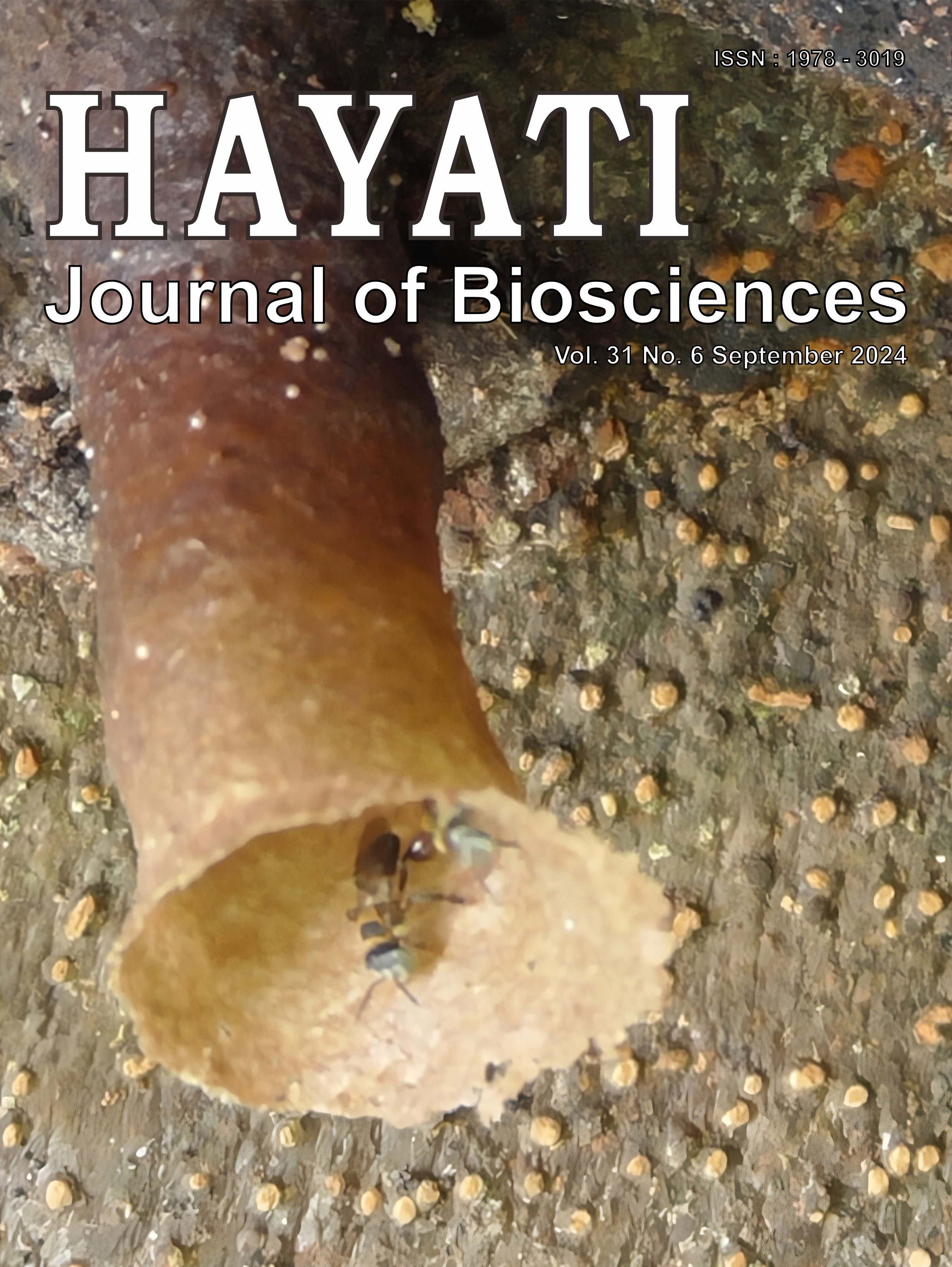Antibacterial, Antioxidant, and Cytotoxic Properties of Eclipta prostrata Extracts
Abstract
Eclipta prostrata is traditionally used in Asian medicine to treat skin diseases. Given the side effects and bacterial resistance of conventional treatments, especially in aging populations, alternative therapies are needed. This study assesses the antibacterial, antioxidant, and cytotoxic properties of E. prostrata extracts, focusing on optimizing extraction and fractionation methods for better efficacy. Dried whole plants were extracted with ethanol. Antibacterial activity was tested against Staphylococcus aureus, MRSA, S. epidermidis, and Pseudomonas aeruginosa using broth microdilution to determine minimum inhibitory concentrations (MIC). Antioxidant activity was assessed using a DPPH radical scavenging assay, and cytotoxicity was tested in Vero cells using an MTT assay. The MIC values for crude ethanol extracts ranged from 1.56 to 3.12 mg/ml, and from 0.78 to 1.56 mg/ml for fractionated compounds, indicating increased antibacterial efficacy in fractionated compounds. Antioxidant assays showed an IC50 of 0.666 mg/ml for crude extracts and 0.174 mg/ml for fractionated compounds, indicating higher antioxidant activity. Total phenolic content was 23.25±2.03 mg GAE/g for crude extracts and 95.56±1.09 mg GAE/g for fractionated compounds. Cytotoxicity assays showed IC50 values of 0.10±0.02 mg/ml for crude extracts and 0.06±0.01 mg/ml for fractionated compounds. This study advances extraction and fractionation methods, yielding extracts with significantly increased antibacterial and antioxidant properties. E. prostrata extracts, particularly fractionated compounds, show promising therapeutic potential, though high cytotoxicity in some fractions requires further investigation. These findings support the potential of E. prostrata in modern pharmaceutical formulations for treating skin conditions, especially those associated with aging.
Downloads
Copyright (c) 2024 Nalin Wongkattiya, Phanchana Sanguansermsri, Chareeporn Akawatchai, Ian Fraser, Donruedee Sanguansermsri

This work is licensed under a Creative Commons Attribution-NonCommercial 4.0 International License.
HAYATI J Biosci is an open access journal and the article's license is CC-BY-NC. This license lets others distribute, remix, tweak, and build upon author's work, as long as they credit the original creation. Authors retain copyright and grant the journal/publisher non exclusive publishing rights with the work simultaneously licensed under a https://creativecommons.org/

























.png) IPB University
IPB University Department of Biology
Department of Biology The Indonesian Biological Society
The Indonesian Biological Society 

